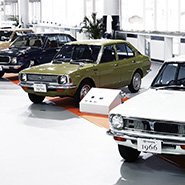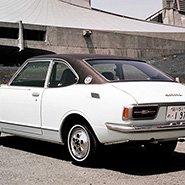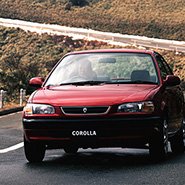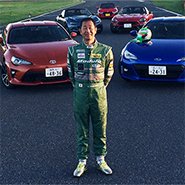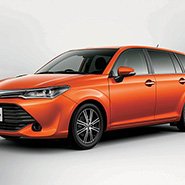Nov. 01, 2016
1966: The era of the first-generation Corolla
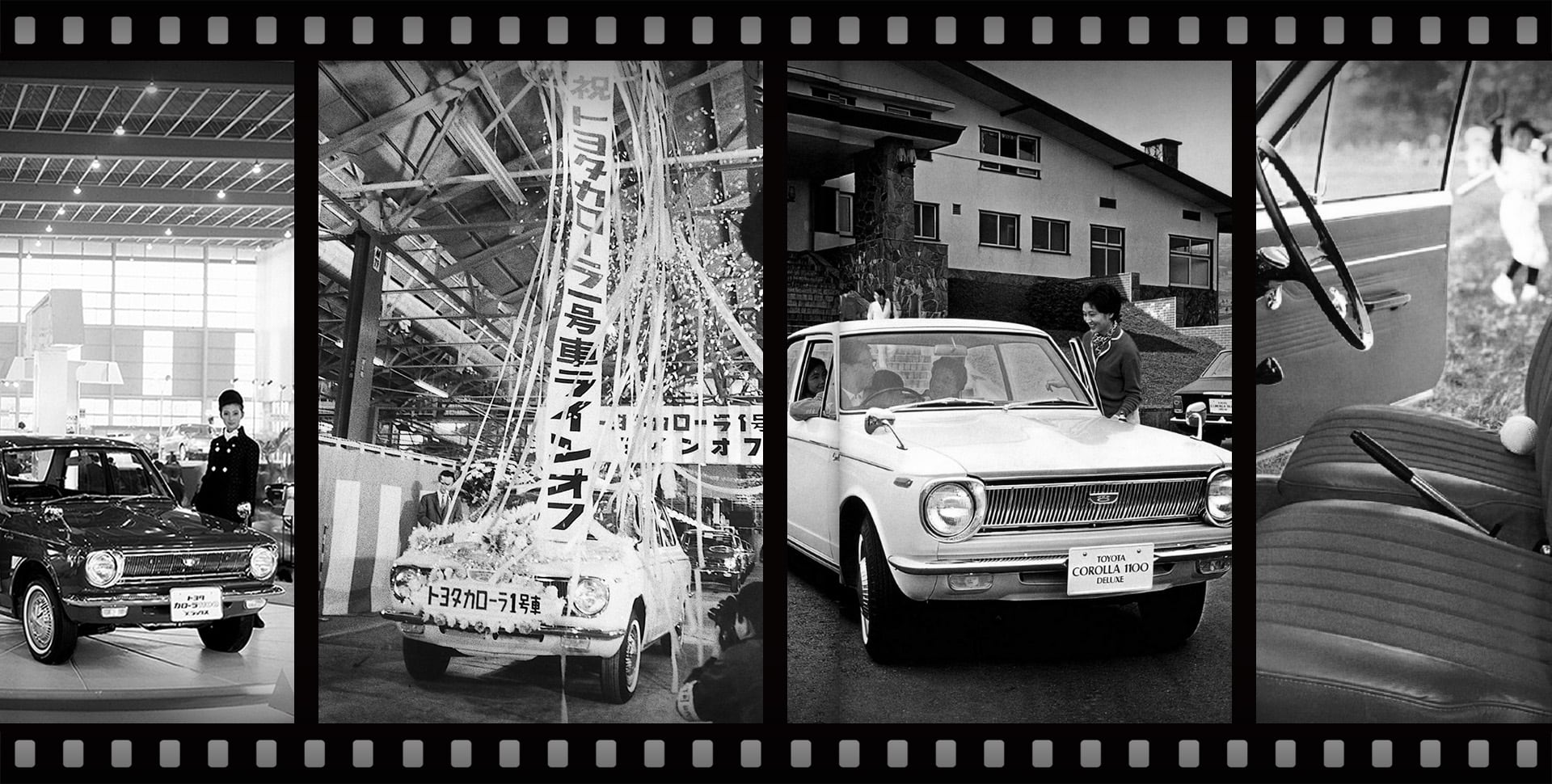

1st Generation Corolla: In Pursuit of the 80-Plus Points Concept

Toyota became aware of the need for a car for the masses in the late 1950s as Japan recovered from the war, and the economy had expanded as it headed toward the period of rapid economic growth. The government had also recently announced the “National Car Concept.” Given this, the Publica was launched in 1961, priced at an appealing 389,000 yen with simple configuration and high productivity. While the original intent was to implement a full model change and release the car for the masses in an evolved form, this idea was abandoned due to technical issues and customer response that was less favorable (although the 2nd generation was launched in 1969).
Instead, a new car was designed and was released as the first generation Corolla in 1966. The leader of the development was Tatsuo Hasegawa, who had designed aircraft during WWII, and had been in charge of the design of the earlier Publica and the Toyota Sports 800 after the war. While Mr. Hasegawa was well known as the engineer who introduced the concept of aircraft aerodynamics to automotive design, he also came up with the “80-plus points” concept for the Corolla’s design. The points referred to the score of the car when evaluated on a scale of 1 to 100. While one might imagine at first glance that the 80-point target implied that there was no need to try to attain a perfect score, the real meaning of the concept was to aim for balanced high scores in all areas and a performance that exceeds 90 points.
As a result, the concept represented the essence of the development of practical cars which could be driven for many years. The Corolla itself was perfectly aligned with this concept, though it also included some sporty elements such as a 4-speed manual transmission as well as separate meters. Yet, unlike the plain practicality of the Publica, the Corolla also featured sporty design elements in other areas as well, such as the subtle curves in the body, and the semi-fastback form with a new relaxed roof line. Incidentally, a two door coupe-style Corolla with an even sportier image was released a year and a half later as the Corolla Sprinter.
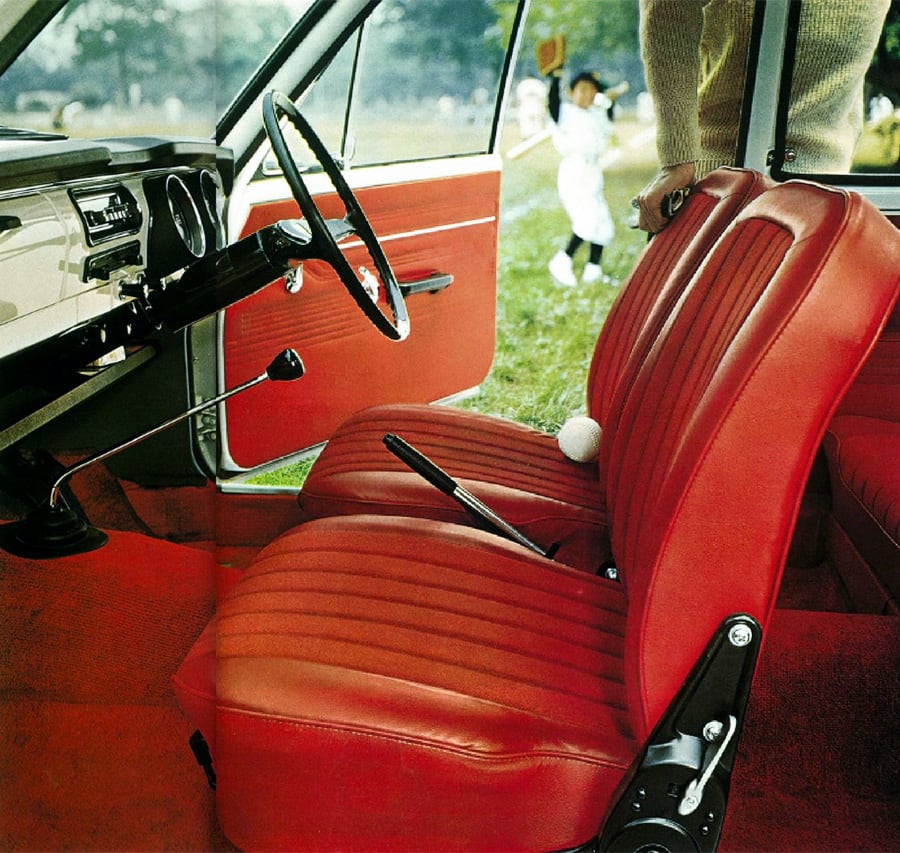
These factors paved the growing interest in speed, as expressways were opened one after the other, further raising the popularity of the Corolla. Meanwhile, the interior also grabbed the imagination of the people at the time, such as with the bold use of red seat material. The Corolla was also appealing in mechanical terms, with the use of the newly developed K model engine with a 1,100 cc displacement that exceeded that of its rival, the Sunny by 100 cc. Structurally speaking, the car also featured aluminum headlight enclosures which were considered a luxury for a practical car at the time. The car was also ready for the age of speed in performance terms as well, with the internal crankshaft being supported by five bearings to help reduce vibration. The Corolla was also one of the earliest cars to place the gear shift on the floor instead of on the steering column for a more reliable operation. Though people were much more accustomed to the latter approach and had expressed hesitation at first, the resulting confidence in operating the vehicle was highly praised. On top of these advantages, the most surprising appeal was the concentration of high performance in just about every aspect of the car. This was a strong reflection of the philosophy of designer Tatsuo Hasegawa, which resulted in a car which had advanced features in terms of comfort, quietness, affordability as well as safety performance, which altogether, had the overarching effect of demonstrating his foresight of the future of the industry.

1966: The Period of Rapid Economic Growth and the Seeds of the Motorized Society
The year 1966 coincided with the middle of the era of rapid economic growth - a time in which Japan seemed to have finally left the post-war period behind. It was a time where every aspect of society moved forward with great momentum. The population was also recovering from the post-war era, and had finally grown to over one hundred million people.
Society grew ever brighter as conditions improved steadily during the period of rapid economic growth, which saw a sustained growth rate of 15% annually, coupled with a 10% annual GNP growth between 1956 and 1970. The growth in the size of Japan’s economy by 4.4 times also shocked the world. To this day, this growth is referred to as a miraculous recovery. While Japan had long reigned as the 2nd largest economy in the world, the year it achieved this rank was 1968.
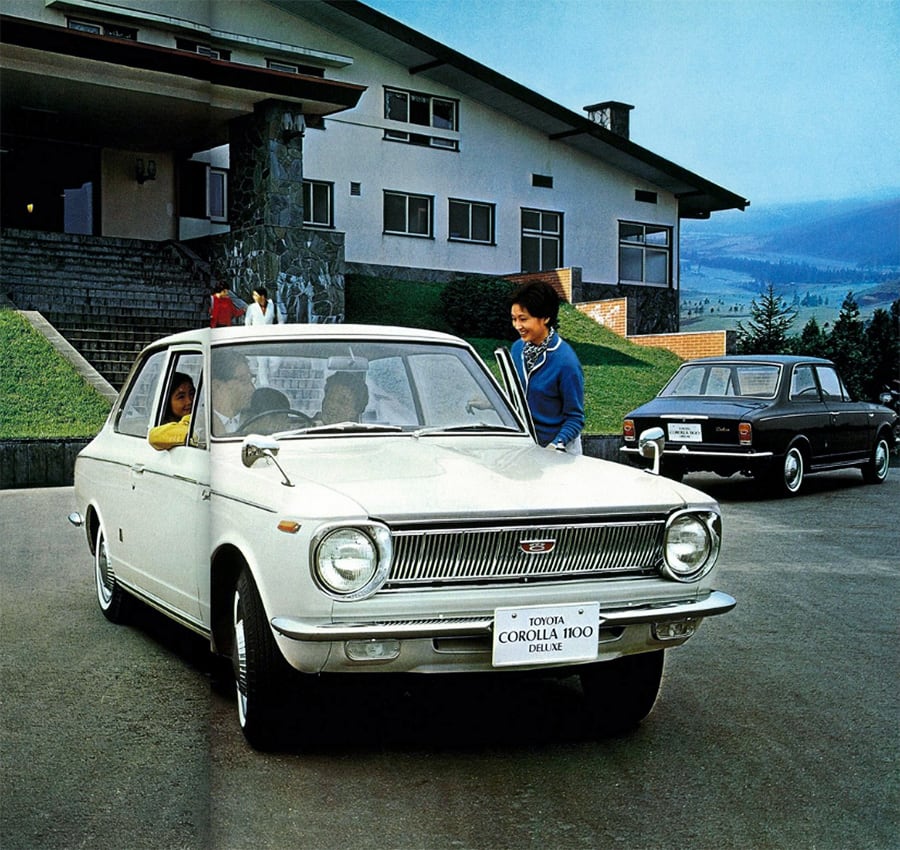
The development of the economy is a natural condition which leads to a brighter society. The so-called “group sounds” Japanese rock music genre which became popular primarily among young females, and the Beatles also came to perform in Japan at this time. The frenzy of their fans, some who became so excited that they fainted, was an amazing sight to behold.
Many new popular phrases were also coined at this time. Many of those words continue to be used today, but one example from the time described the three things that were widely loved. These were, “the Giant, Taiho, and Japanese omelet.” The first two referred to the athletes Shigeo Nagashima and Taiho Koki (the renowned sumo wrestler) respectively, who captured the public’s imagination at the time. This period also saw the emergence of the so-called “new three sacred treasures,” also called the “3Cs” of “Color TV, Cars, and air Conditioners.” The excitement over these new products is understandable, considering that the general public had previously made do with gathering at street corners to watch black and white TV sets in shop windows, and many were lucky to even own an electric fan.
Obviously “cars” in this instance refers to the family car. Although the term “family car” itself is symbolic of this period, few people owned a private car during the 1950s up until the early 1960s. While there were cars available in Japan’s “Kei” mini vehicle category at the time, they tended to be used cars bought with monthly installments.

Thus the so-called “age of motorization” did not arrive in Japan until the latter half of the 1960s. Boosted by the rapid economic development, progress in highway development began in 1954, with the “Five Year Road Development Plan,” which caused a shift to shipping using trucks, and also the spread of private cars. A major turning point occurred during the latter half of the 1960s, with the opening of the Meishin Expressway in 1965, and all routes of the Tokyo-Nagoya Expressway in 1969. Thus the arrival of the Corolla in 1966 coincided with the very moment of the arrival of the new high-speed expressway era.
The resulting motorization of society not only made personal car ownership accessible to the Japanese people, but greatly increased their demand for automotive performance, such as adding the high performance required for driving on expressways at high speeds. It is not a coincidence that the Corolla arrived during this period, and the Corolla met the requirements to become “the car for the masses” in a balanced manner with its performance and quality at a price point accessible to a wide range of consumers. Thus, the first generation Corolla arrived bearing with it a social mission that was perfect for its time.






